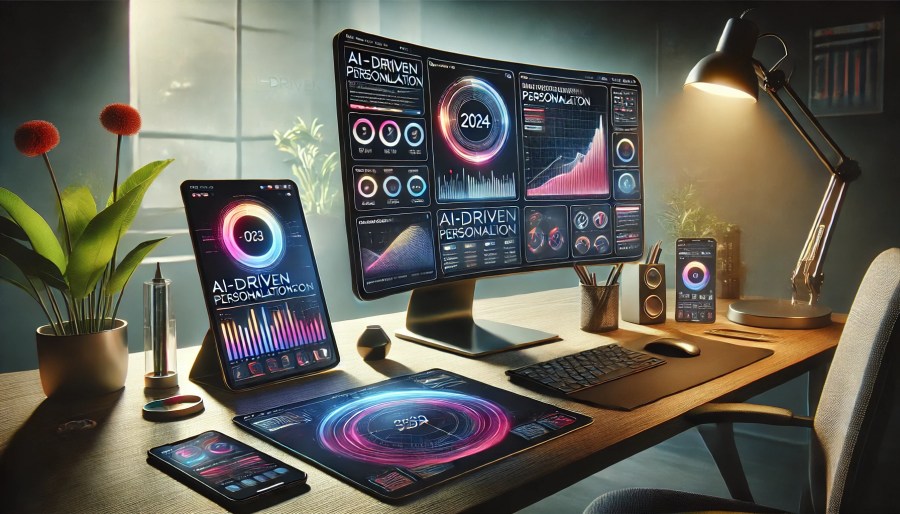Mastering Web Design in 2024: Comprehensive Guide to Trends, Best Practices, and Tools

Introduction
Web design has become an indispensable aspect of the digital landscape, shaping the way businesses connect with their audience. A well-designed website is not just a visual asset—it’s a tool for driving engagement, building trust, and achieving business goals. In 2024, web design trends are more innovative and user-centric than ever, combining aesthetics, technology, and functionality.
Whether you’re new to the field or looking to refine your skills, this guide will cover everything you need to know about web design: its core principles, emerging trends, and the tools and techniques required to excel.
What is Web Design?
At its core, web design involves creating the layout, structure, and visual elements of a website. But it’s much more than that—it’s about ensuring that the site is user-friendly, accessible, and aligned with the brand’s objectives. The discipline combines various elements:
- Aesthetics: Visual appeal through typography, color schemes, and imagery.
- Functionality: Ensuring the website works seamlessly on all devices.
- User Experience (UX): Designing interfaces that offer intuitive navigation and accessibility.
- Technical Aspects: Coding, SEO, and performance optimization.
Web design is both an art and a science, requiring a balance between creativity and technical expertise.
Why is Web Design Important?
- First Impressions Matter
A visitor’s first interaction with your website can determine whether they stay or leave. Research shows that 75% of users judge a company’s credibility based on its website design. - Improved User Engagement
A well-designed website provides clear navigation, easy-to-read content, and quick access to information. This reduces bounce rates and increases conversions. - Supports SEO Efforts
A structured, responsive, and optimized website improves search engine rankings, driving organic traffic. - Boosts Brand Consistency
Design elements like logos, colors, and typography reinforce brand identity and build trust among users.
Core Principles of Web Design
1. User-Centered Design (UCD)
Good web design prioritizes the user’s needs. To achieve this:
- Conduct User Research: Understand your target audience’s preferences and behavior.
- Create Personas: Develop user personas to guide design decisions.
- Focus on Accessibility: Use tools like high-contrast text and screen reader-friendly navigation to cater to all users.
2. Responsiveness
With mobile traffic accounting for over 50% of global website visits, responsive design ensures your site adapts seamlessly to any device, offering a consistent experience.
3. Visual Hierarchy
Strategically placing elements like headlines, images, and CTAs helps guide users through the content in an intuitive way.
4. Performance Optimization
Fast-loading websites are essential. Techniques like image compression, lazy loading, and content delivery networks (CDNs) help reduce load times and enhance user satisfaction.
5. SEO Integration
SEO isn’t just about keywords—it’s about how your site is built. Factors like site speed, mobile-friendliness, and structured data significantly impact your search rankings.
Trends in Web Design for 2024
1. Minimalism with a Twist
Clean, uncluttered designs with bold typography and vibrant color schemes are trending. Minimalism enhances readability and keeps the focus on essential content.
2. AI-Powered Personalization
AI tools are revolutionizing web design by automating processes and offering personalized experiences:
- Dynamic Content: AI tailors website content based on user behavior.
- Chatbots: Advanced AI chatbots provide 24/7 support and guide users effectively.
3. Dark Mode and High Contrast Themes
Dark themes reduce eye strain and add a modern aesthetic to websites. They’re particularly popular among tech-savvy audiences.
4. Interactive Animations
Subtle animations, micro-interactions, and dynamic scrolling engage users and make navigation enjoyable.
5. Sustainable Design
With increasing awareness about digital carbon footprints, web designers are adopting energy-efficient practices like optimized code and reduced image sizes.
6. Immersive Experiences
Augmented Reality (AR) and Virtual Reality (VR) are breaking new ground in e-commerce, education, and entertainment.
Common Challenges in Web Design
- Balancing Creativity with Functionality
Overly creative designs can compromise usability. Striking the right balance is key. - Keeping Up with Trends
Trends evolve rapidly, making it essential to continuously update your skills. - Ensuring Accessibility
Catering to diverse audiences requires careful attention to detail, such as color contrast and keyboard navigation.
Best Practices for Effective Web Design
1. Start with a Clear Purpose
Define the primary goal of your website—whether it’s generating leads, sharing information, or selling products.
2. Use Grid Layouts
Grids provide structure and consistency, making it easier to organize content.
3. Prioritize Navigation
Ensure menus are straightforward, and always include a search bar for convenience.
4. Optimize for Speed
Slow websites frustrate users. Regularly test your site’s performance using tools like Google PageSpeed Insights.
5. Regularly Update Content
Fresh content not only keeps users engaged but also improves your SEO rankings.
Tools for Web Design
1. Design Tools
- Figma: Ideal for prototyping and collaboration.
- Adobe XD: Offers advanced design capabilities for professional projects.
2. Website Builders
- WordPress: Perfect for customizable websites.
- Webflow: Combines design freedom with coding power.
3. Performance and SEO Tools
- GTmetrix: Analyze website performance.
- Yoast SEO: Optimize content for search engines.
4. Accessibility Checkers
- WAVE: Evaluate accessibility and fix potential issues.
- Lighthouse: Google’s tool for improving performance and accessibility.
Real-World Case Studies
1. Airbnb
Airbnb’s minimalist yet functional design focuses on clear imagery and seamless navigation, creating an intuitive user experience.
2. Spotify
Spotify uses AI-powered recommendations and a sleek dark theme to offer a personalized, engaging experience.
The Future of Web Design
As technology evolves, web design will continue to embrace advancements like AI, 5G, and immersive experiences. Designers must remain adaptable, focusing on user-centric solutions while leveraging emerging tools to stay ahead in the competitive digital space.
Conclusion
Web design is a multifaceted discipline that combines art, technology, and strategy. By understanding its principles, embracing current trends, and using the right tools, you can create websites that not only captivate audiences but also achieve business objectives.
Start implementing these strategies today and transform your online presence into a powerful digital asset that stands out in the ever-changing world of web design.